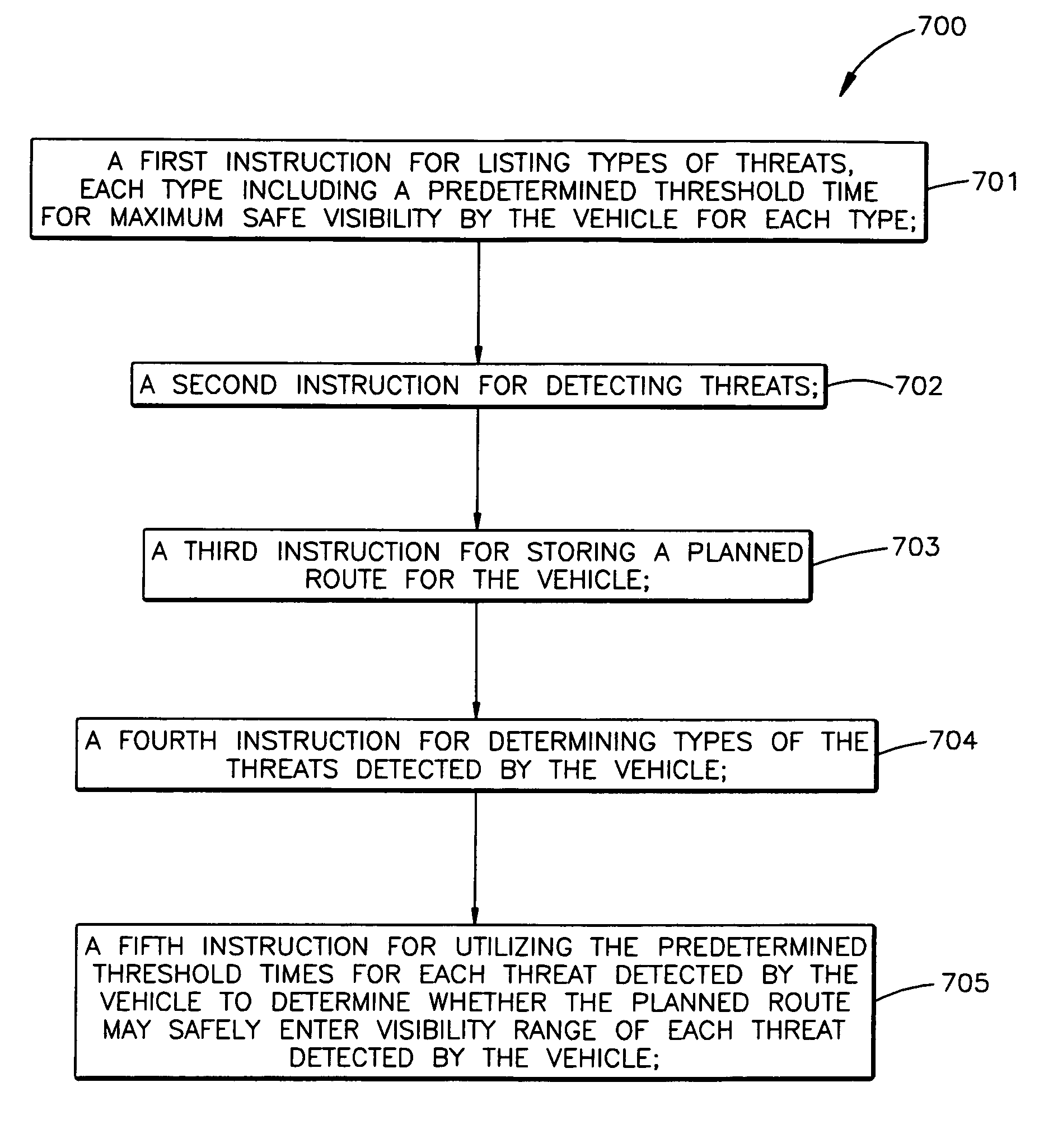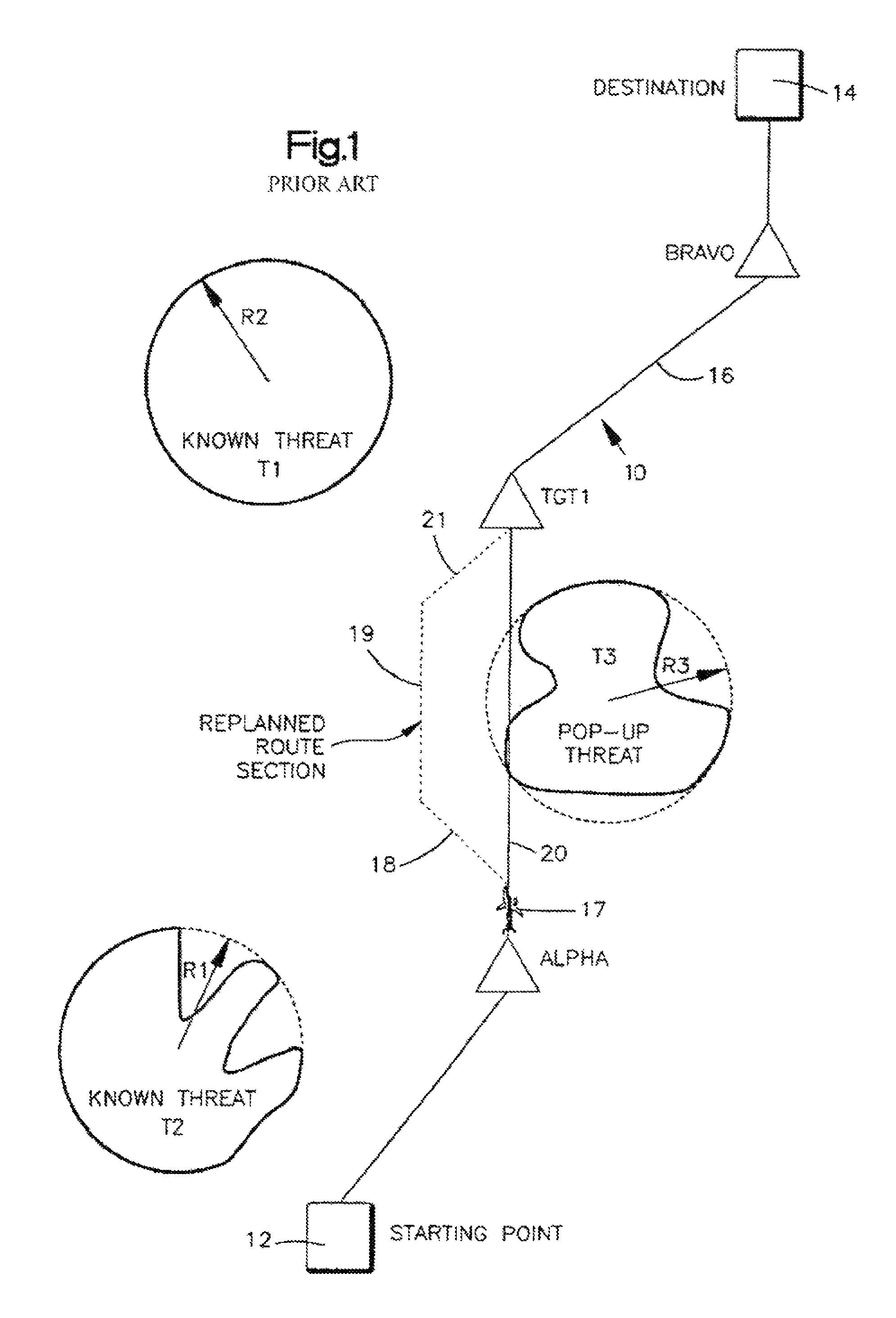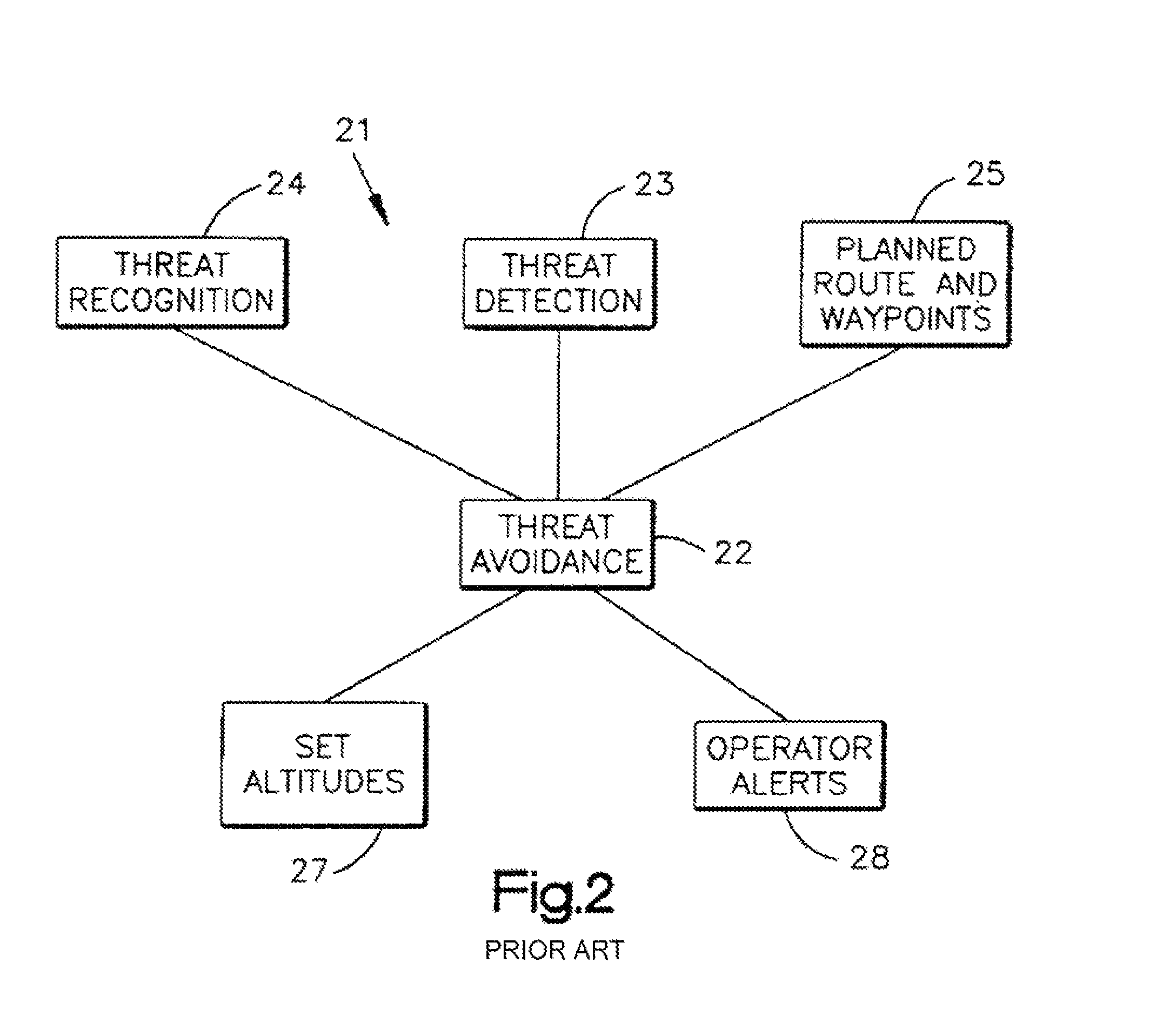Survivability system
a survivability and planning system technology, applied in the direction of process and machine control, instruments, navigation instruments, etc., can solve the problems of limiting the options of the aircraft operator, evading maneuvers, and unplanned problems
- Summary
- Abstract
- Description
- Claims
- Application Information
AI Technical Summary
Benefits of technology
Problems solved by technology
Method used
Image
Examples
Embodiment Construction
[0018]To better appreciate and understand the scope of the invention, an example of a conventional approach to the problem of avoiding previously unknown threats that appear without warning is described below. FIG. 1 illustrates known threats T1, an antiaircraft battery, and T2, a radar site, each having a maximum intervisibility range R1, R2, respectively. Intervisibility is the capability of both the threat and the aircraft to detect, or be visible to, each other. Ideally, the aircraft detects the threat before intersecting a threat's intervisibility.
[0019]However, the nature of the terrain may affect intervisibility. For example, R1 may not be circular because a mountain range may block the view of T1, an antiaircraft battery. A planned route 10 may include a starting point 12, an ending point or destination 14, and a number of intermediate waypoints such as Alpha, TGT1, and Bravo. Connecting each waypoint of the planned route is a leg, such as leg 16 between waypoints TGT1 and B...
PUM
 Login to View More
Login to View More Abstract
Description
Claims
Application Information
 Login to View More
Login to View More - R&D
- Intellectual Property
- Life Sciences
- Materials
- Tech Scout
- Unparalleled Data Quality
- Higher Quality Content
- 60% Fewer Hallucinations
Browse by: Latest US Patents, China's latest patents, Technical Efficacy Thesaurus, Application Domain, Technology Topic, Popular Technical Reports.
© 2025 PatSnap. All rights reserved.Legal|Privacy policy|Modern Slavery Act Transparency Statement|Sitemap|About US| Contact US: help@patsnap.com



